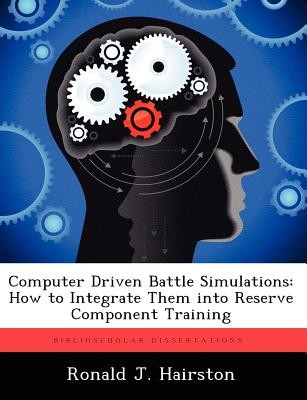
- We will send in 10–14 business days.
- Author: Ronald J Hairston
- Publisher: BiblioScholar
- ISBN-10: 1249364841
- ISBN-13: 9781249364849
- Format: 18.9 x 24.6 x 0.9 cm, softcover
- Language: English
- SAVE -10% with code: EXTRA
Reviews
Description
Computer driven battle simulations (CDBSs) must be integrated into Reserve Component (RC) training in such a way that they meet US Army Forces Command (FORSCOM) training requirements while addressing the geographical imbalance of RC maneuver units, training units, and training alignments. This means that although one fielding strategy may work well in the Army area, other Army areas will require different strategies to meet their unique needs. Therefore, a tailored distribution of CDBSs to a combination of RC maneuver units, training units, and battle simulation centers (BCSs) is necessary to counterbalance regional requirements. This study identifies and recommends solutions to the problems encountered when the Reserve Components (RCs) Army Reserve and Army National Guard integrate computer driven battle simulations (CDBSs) into their training. It identifies RC training requirements directed by FORSCOM Regulation 350-2 (change-2, 2 February 1987) and the ability of RC units to operate CDBSs in support of training. The major issues affecting integration of CDBSs into RC training include Corps/Division Training Coordination Program (CORTRAIN) alignments; the frequency of future RC training exercises; the ability of RC personnel to operate computerized equipment; the adequacy of training facilities to support CDBS systems; and the distances between RC units, their training organizations and proposed sites for simulation centers. Using these issues, four strategies for integrating CDBSs were analyzed in detail. They included the fielding of systems to Active Component (AC) units, to RD Maneuver Area Commands (MACs) and Maneuver Training Commands (MTCs), to RD maneuver units, and to proposed battle simulation centers (BSCs).
EXTRA 10 % discount with code: EXTRA
The promotion ends in 17d.05:27:24
The discount code is valid when purchasing from 10 €. Discounts do not stack.
- Author: Ronald J Hairston
- Publisher: BiblioScholar
- ISBN-10: 1249364841
- ISBN-13: 9781249364849
- Format: 18.9 x 24.6 x 0.9 cm, softcover
- Language: English English
Computer driven battle simulations (CDBSs) must be integrated into Reserve Component (RC) training in such a way that they meet US Army Forces Command (FORSCOM) training requirements while addressing the geographical imbalance of RC maneuver units, training units, and training alignments. This means that although one fielding strategy may work well in the Army area, other Army areas will require different strategies to meet their unique needs. Therefore, a tailored distribution of CDBSs to a combination of RC maneuver units, training units, and battle simulation centers (BCSs) is necessary to counterbalance regional requirements. This study identifies and recommends solutions to the problems encountered when the Reserve Components (RCs) Army Reserve and Army National Guard integrate computer driven battle simulations (CDBSs) into their training. It identifies RC training requirements directed by FORSCOM Regulation 350-2 (change-2, 2 February 1987) and the ability of RC units to operate CDBSs in support of training. The major issues affecting integration of CDBSs into RC training include Corps/Division Training Coordination Program (CORTRAIN) alignments; the frequency of future RC training exercises; the ability of RC personnel to operate computerized equipment; the adequacy of training facilities to support CDBS systems; and the distances between RC units, their training organizations and proposed sites for simulation centers. Using these issues, four strategies for integrating CDBSs were analyzed in detail. They included the fielding of systems to Active Component (AC) units, to RD Maneuver Area Commands (MACs) and Maneuver Training Commands (MTCs), to RD maneuver units, and to proposed battle simulation centers (BSCs).


Reviews